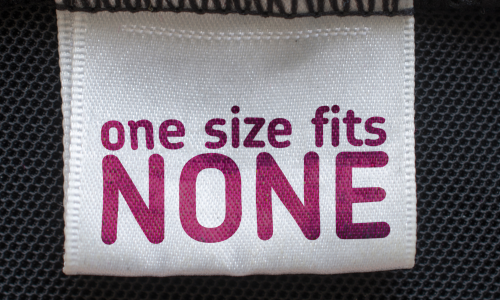Executive strategy: a careful plan or method for achieving a particular goal, usually over a long period of time: the skill of making or carrying out plans to achieve a goal.
FY21 kicked off just after the devastating scope of the COVID-19 pandemic had truly hit home. Businesses had already torn up their carefully laid out executive strategy and swung into full crisis mode. Entire cities had begun working from home within a matter of weeks and even ‘recession-proof’ industries were profoundly impacted.
Organisations that survived the impact are now leaning into the executive strategy process for FY22. Executive teams are busy setting budgets and strategic milestones… But are they thinking differently about executive strategy in the post-COVID world? And what have we learned from our experiences in FY21?
If FY21 taught us anything about executive strategy, it should surely be that our assumptions about the next three years could be just as wildly off course as they were in the good old days of 2019. What does this mean for executive team development and strategy? Where do we go from here?
Traditional executive strategy
In the post-COVID world the idea that ‘if you keep doing what you always did, you’ll get what you always got’ no longer holds water. In the past, if you laid out a careful, long-term executive strategy and worked hard to deliver it, you would (hopefully) get what you always got – business growth and shareholder returns.
The traditional model of executive strategy starts with a review of the preceding period – what was planned, what was achieved, and what is still left to be done. This has the potential to become a box-ticking exercise focused on action and achievement.
Most executive teams then jump to what to do next, facilitated through a SWOT or external scanning exercise, looking for opportunities to capitalise on, so that ambitious revenue targets can be met. With the executive strategy in place, the organisation puts on its blinkers and gets going, straight into action.
This strategic planning process is based on an assumption that organisations can manage and control the external environment. Through sheer might and brute force they can make it to the finishing line, victorious. But what happens when the unexpected hits and the executive strategy is no longer relevant? How has all the careful planning and strategic thinking readied the organisation to respond to uncertainty?
The short answer is, that old-style executive strategy simply doesn’t help organisations respond to uncertainty at all. If anything, it creates a false sense of security and certainty that simply doesn’t chime with this crazy, uncertain world we live in.
And so I have a radical suggestion… what if we throw out those tired old three-year strategic plans and make FY22 the year we pivot and transform executive strategy? And what if our executive team development focuses on developing the capability to do so?
How can we start to think differently about strategic leadership?
Rather than working to set a long-term strategic plan that’s enshrined until the next review point, I’m working with executive teams to design iterative, strategic conversations that hold long term intention, but create the flexibility needed to adapt to constantly changing contexts.
Traditional executive strategy often starts with a retrospective view of the preceding period. In principle, this is a great idea. However, rather than seeing it as a tick-the-box exercise, what if the executive team worked collectively to surface intelligence gathered, capabilities built, lessons learned and assumptions tested? As part of executive team development, some of the questions we can ask include:
- What assumptions do we hold about our business model?
- What assumptions do we have about the external context needed for our business model to be successful?
- How have the needs of our customers changed over the last period?
- What do our shareholders expect now?
- What do our people need now?
- How might we continue to adapt to new contexts?
- How can we better understand risks to our business model?
- How could we best understand opportunities that might emerge this year, as the context continues to change?
- How can we create greater flexibility and adaptability in our operating model?
- How can we evolve our services to respond to new needs?
Expansive, iterative strategic conversations
What I’m proposing is a more expansive and inclusive approach to executive strategy. This way of strategic planning suspends decision-making and action-taking while the group explores possibilities as much as probabilities. In fact, rather than a strategic plan, it’s a series of strategic conversations, where incremental decisions are made toward a longer-term intent. This is an iterative and interactive process, where decisions are revisited as new information and intelligence emerge throughout the year.
Executive team development for a new approach to strategy
Taking a different approach to executive strategy is a big ‘ask’ for CEOs and executive teams – it requires them to hold space for what might come next and be vulnerable enough to communicate a strategic intent with an incremental approach to delivery. This is fundamentally different to communicating an executive strategy with a roadmap that’s set in stone. So what does this mean for executive team development?
I’m fond of saying ‘we don’t need another hero’… heroes ride in on a white horse with all the answers, ready to take charge. When I coach executive teams I work with them to foster a collective leadership mindset, where all perspectives can be surfaced and different skill sets harnessed. Taking a more flexible, iterative approach to executive strategy requires executive teams to develop collective leadership skills, being open to input and intelligence from multiple sources and suspending the desire to determine right and wrong, good or bad, impossible or possible, best or worst.
To respond effectively to the shifting challenges and opportunities of FY22, leaders will be required to give clarity of direction without certainty of the path forward – because that path may change if the external context changes in unpredictable ways. This is about leading for what might be, with all its ambiguity and infinite possibility.
This approach to leadership is challenging. We all want to feel in control, certain about our future, in charge of our destiny. But true organisational and individual resiliency is forged when we don’t hold so tightly to our plan; and instead, adapt as the world changes. Because it inevitably will.
Need help with strategy for FY22?
Peta Karunaratne is a Leadership Circle Certified 360 and Collective Leadership Assessment Practitioner. If the you’re looking for support as you plan for an uncertain future, the Karuna Collective can help. Whether you’re after group coaching, executive team coaching or collective leadership development, feel free to get in touch for a commitment-free discussion about your situation and your needs.






